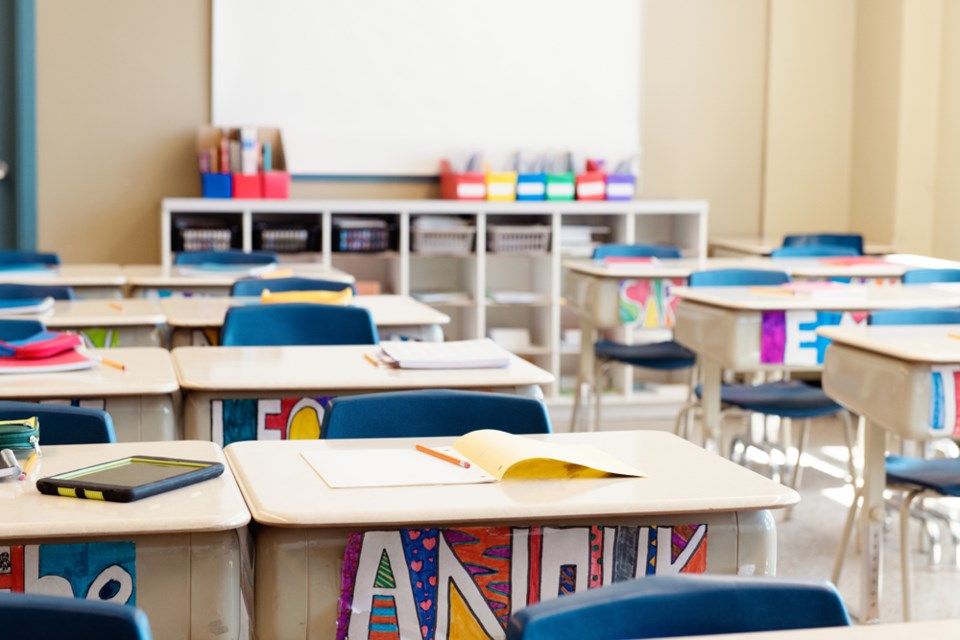The New Westminster school district will need to dip into surplus reserves to balance the books for 2022/23 – but it has managed to avoid cuts to programs.
School District 40 trustees have approved a $92.7-million budget for the upcoming school year.
The budget calls for a large increase in projected operating grants from the province, to the tune of $2.3 million.
That increase comes solely from projected enrolment increases in the fast-growing New Westminster district, since the B.C. government hasn’t increased its funding rates.
The projected increase in enrolment — from 6,937 in 2021/22 to 7,105 in 2022/23 — comes along with a need for more staff. The 2022/23 budget includes money for 13.9 full-time equivalent teachers and five FTE education assistants, totalling about $1.7 million.
SD40 also has to find the money to cover costs that aren’t funded by the B.C. government.
Among those unfunded cost pressures, as detailed in an SD40 budget document, are $138,000 to cover the cost of inflation in services and supplies; $206,000 to cover wage increases for non-union staff (managers, principals and vice-principals), $216,000 for new portables, and $130,000 for sick leave benefits for casual staff and teachers on call.
All told, the district found itself with a structural deficit of $1.17 million in 2022/23, with smaller deficits (of $598,000 and $324,000, respectively) anticipated in the next two years. Those amounts are just to meet the district’s base budget and don’t account for any extras or new priorities.
Indigenous education, anti-racism, climate action see new spending in SD40
The district is dipping in to its $3.2 million in surplus reserves to cover its needs – but not for the entire amount of the deficit.
“Given the base budget the district faces, the fiscally responsible action would be to work to reduce that deficit by identifying ongoing efficiencies,” said a budget report from secretary-treasurer Bettina Ketcham. “Reliance on balancing budgets solely through the use of reserves cannot be sustained over the long run.”
The district found the necessary “efficiencies” by targeting areas that would affect students least, including reprioritizing money originally set aside for flexible furniture, restructuring the way international education is staffed, and restructuring some positions in the district office. In all, those savings totalled $529,577.
At the same time, the 2022/23 budget also incorporates money to cover some of the priorities set out by district staff, students and parents during budget consultations. It includes a total of $568,885 for one-time and ongoing expenditures to boost Indigenous education, student supervision, anti-racism work and climate action efforts, among others.
It also includes a new district counsellor for safe and caring schools, continued support for the Fuel Up lunch program, and a new behaviour specialist (0.6 FTE) to support the district’s inclusive education work.
Board chair Gurveen Dhaliwal thanked staff for their efforts to come up with a budget that works for students and staff.
“Districts across the province are faced with difficult decisions as they try to balance their budgets while facing major deficits,” she said at the board’s May 10 operations committee meeting. “Despite no increase to FTE funding, increasing pressures and our own structural deficit, our district has been able to produce what I would consider a pretty phenomenal budget.”
Trustee Danielle Connelly said there’s always room for improvement but, given the reality of pandemic recovery, she said it’s wise to “temper expectations.”
“We truly have been through a lot together, and I think that we’re working really strongly to get to the other side and be that much stronger as our little district that could, and always does,” she said.
You can find a full budget report in the agenda package for the May 24 school board meeting.
Follow Julie MacLellan on Twitter @juliemaclellan.
Email Julie, [email protected].



